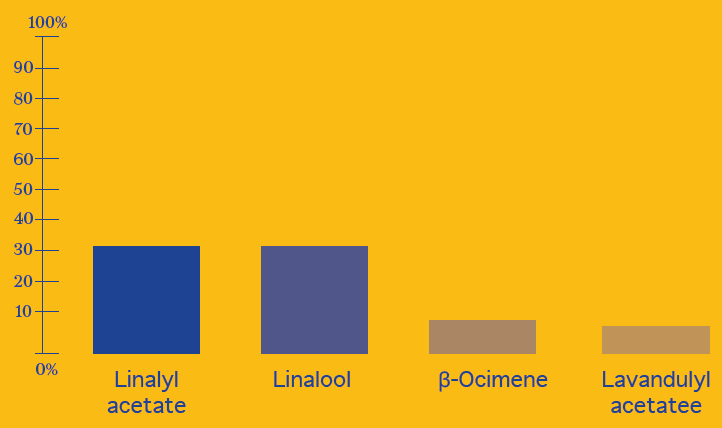Enhanced TDS
Knowde-enriched technical product data sheet
Identification & Functionality
- Chemical Family
- INCI Name
- Ingredient Origin
- FEMA Number
- 2622
- CAS No.
- 90063-37-9, 8000-28-0
- Technologies
- Product Families
- Botanical Name
Lavandula angustifolia Mill
- Plant Family
Lamiaceae
- Plant Part
Flower tips
- Olfactive Description
Aromatic, hay, floral, fruity
- Key Compounds

Features & Benefits
- Benefit Claims
- Labeling Claims
- Product Background
Known since Antiquity, lavender was used in Roman times to fragrance linen and bathwater. However, it was only in the Middle Ages that the term “lavender” appeared, probably from Italian “’lavare”, meaning “to wash”. In the 13th century lavender was distilled and its essential oil was used for therapeutic purposes: it was commonly found in the medicinal plant gardens of monasteries. The lavender grown in Bulgaria, the world’s leading producer, is a clonal lavender, propagation takes place by means of replanting cuttings, resulting in identical-looking lavender fields with plants of the same color and height. However, several local varieties coexist in various areas throughout the country (north-east, center). Lavender is used in aromatherapy and has long been used for its antiseptic and healing properties. Its essential oil is soothing and antibacterial.
Applications & Uses
- Markets
- Applications
- Fragrances & Perfume Applications
- Skin Care Applications
Properties
- Physical Form
- Appearance
- Pale yellow to amber yellow liquid
Regulatory & Compliance
- Certifications & Compliance
- Approvals
COSMOS quality approved (ECOCERT)
Technical Details & Test Data
- Harvest, Extraction & Yield Information
- Harvest : Annual, from July to August
- Extraction : Steam distillation, about one hour
- Yield : 1 kg of essential oil from 100 kg of plant